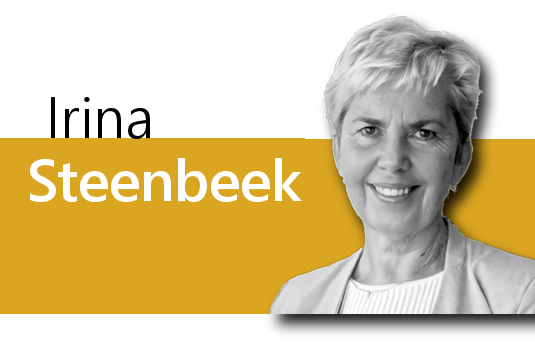
The Data Will Not Govern Itself
In my years of working in the field of data governance and stewardship, I’ve encountered a recurring truth that remains as relevant today as it was when I first started: the data will not govern itself. This simple yet profound statement encapsulates the essence of Non-Invasive Data Governance (NIDG) – a philosophy and methodology I’ve championed and refined over the years.
NIDG is not just about managing data; it’s about empowering every individual in an organization to take an active role in this process. Let me walk you through how the principles of NIDG can be followed to activate and energize your organization and how transforming every individual into a data steward enables the implementation of effective data governance.
The Essence of Non-Invasive Data Governance
At its core, NIDG is about recognizing and formalizing the roles that individuals already play in data management. It’s a strategic approach that champions efficiency, collaboration, and adaptability. This approach stands in contrast to the more authoritarian models of data governance that impose rigid structures and stringent policies. Instead, NIDG recognizes that governance is already happening, albeit informally, leading to inefficiencies and ineffectiveness within organizations.
Democratizing Data Stewardship
The democratization of data stewardship is a fundamental aspect of NIDG. In this model, every individual who interacts with data – whether they’re defining it or inputting, analyzing, or making decisions based on it – is considered a steward of that data. This inclusive approach lays the groundwork for a more collaborative and adaptive framework.
Cultural Transformation and Leadership Buy-In
Implementing NIDG requires a cultural shift within the organization. This shift starts with leadership buy-in and commitment. Leaders must champion the values of NIDG, emphasizing the importance of collaboration and recognizing the potential in every individual to contribute to the governance landscape. The transformation also involves targeted training sessions, workshops, and communication initiatives to embed these values into the organizational DNA.
Breaking Down Silos
Traditional governance models often result in limited adoption and organizational silos, where data is hoarded within departments, hindering its free flow and optimal utilization. NIDG, by design, seeks to break down these barriers, promoting collaboration across departments and encouraging the sharing of insights, data, and expertise.
Strategic Considerations and Assessment
Implementing NIDG requires a strategic roadmap that considers the unique needs, goals, and challenges of the organization. Key strategic considerations include a comprehensive assessment of the existing governance landscape, leadership alignment, training and skill development, technology integration, effective communication strategy, pilot programs, and continuous monitoring and improvement.
The Transformative Impact of NIDG
The adoption of NIDG within an organization leads to the democratization of data, enhancing data quality and reliability. It fosters a culture where data becomes a shared asset, and its accuracy becomes a collective responsibility. This approach also contributes to a more agile and responsive organization, where decisions are based on a comprehensive understanding of data, leveraging it for strategic advantage.
Realistic and Operational Implications
Accepting the notion that everyone is a data steward leads to a significant operational shift in how data is managed. It means that accountability for data-related actions is spread across the organization. This accountability extends beyond mere compliance; it encompasses the stewardship of data quality, its ethical use, and ensuring its alignment with business objectives.
Activation and Engagement of Data Stewards
Under NIDG, activating data stewards involves recognizing and leveraging their existing interactions with data. Training and skill development are focused on enhancing their understanding of their role in data governance. This approach does not seek to impose new responsibilities but to formalize and acknowledge the existing contributions of each individual.
The Role of Technology in NIDG
In the NIDG approach, the strategic integration of technology is pivotal. This encompasses adopting data cataloging tools that facilitate the organization and retrieval of data, thereby streamlining governance processes. Collaboration platforms play a significant role, offering a centralized space for stakeholders to communicate and share insights, which is essential for fostering a culture of shared data responsibility.
Communication and Cultural Change
A well-defined communication strategy that includes the three Os of data governance communications (orientation, onboarding, ongoing – wow… that article is from 2013) is principal in NIDG. Transparency and effective communication ensure that all stakeholders are informed about the changes, understand their role in the governance framework, and feel empowered to contribute.
Pilot Programs and Iterative Implementation
In the journey of implementing NIDG, initiating pilot programs is a strategic step. These pilot programs serve as testbeds, allowing organizations to apply NIDG principles on a smaller scale before rolling them out organization-wide. This approach facilitates iterative implementation, where each phase of the pilot provides valuable insights and learning opportunities. Through these pilots, organizations can closely monitor the successes and challenges encountered, enabling them to make informed adjustments to their governance strategies.
Continuous Monitoring and Improvement
NIDG is a dynamic and evolving approach, mirroring the continuous growth and transformation of an organization. It thrives on regular monitoring and assessment, ensuring that the governance framework remains in harmony with the shifting goals and strategies of the organization. This process of ongoing evaluation is crucial, as it allows for the identification of areas needing improvement, adjustment of practices to meet new challenges, and capitalization on emerging opportunities.
Overcoming Challenges and Resistance
While the benefits of NIDG are substantial, organizations may encounter challenges during implementation, such as resistance to cultural change and potential disruptions to existing workflows. To address these challenges, the strategic plan includes change management initiatives, targeted communication campaigns, and phased implementation to help individuals and teams adapt gradually.
Navigating the Future with NIDG
In the digital age, where data is a crucial asset, NIDG emerges as a signal of innovation and adaptability. Implementing this governance paradigm by design is a commitment to fostering a culture where data is a shared asset, decisions are informed by collective intelligence, and the organization thrives in the face of evolving challenges.
In conclusion, “The Data Will Not Govern Itself” is more than just a saying; it’s a philosophy that underpins the success of NIDG. By embracing this approach, organizations can effectively activate and energize their workforce, turning every individual into a data steward. This transformation is essential for achieving a robust, agile, and responsive data governance framework, ensuring organizations not only survive but thrive in the data-driven future.
Non-Invasive Data Governance[tm] is a trademark of Robert S. Seiner and KIK Consulting & Educational Services
Copyright © 2024 – Robert S. Seiner and KIK Consulting & Educational Services

 - by
- by





